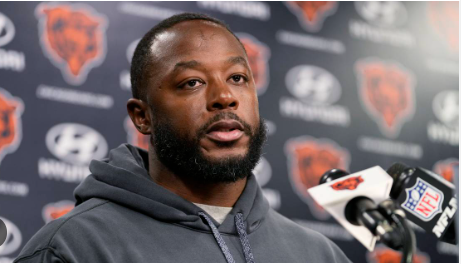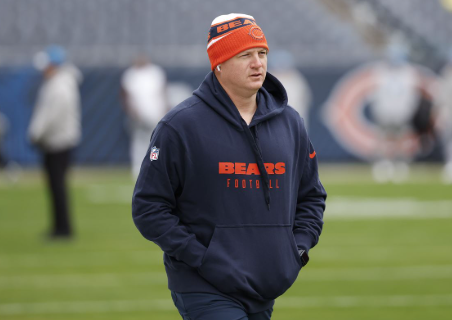In a week of sweeping changes for the Chicago Bears, including the firing of offensive coordinator Shane Waldron and the promotion of Thomas Brown, one decision remains unchanged: Caleb Williams will continue as the starting quarterback.
Despite speculation, benching Williams was never a serious consideration, even after discussions among team leaders and management about his recent struggles. Sources reveal that the idea of starting backup Tyson Bagent was briefly floated as a way to give Williams a mental and physical reset, similar to what the Panthers did with Bryce Young earlier this season. However, head coach Matt Eberflus confirmed Williams’ status as the starter, emphasizing the team’s confidence in his long-term potential.
A Rookie Rollercoaster
Williams, the No. 1 overall draft pick, has faced a steep learning curve transitioning from college to the NFL. While he displayed flashes of brilliance during a three-game winning streak with seven touchdowns and just one interception, his performance has since dipped. Despite the challenges, teammates like wide receiver DJ Moore have rallied around him.
“You’ve got to support him, no matter what,” Moore said. “He’s out there busting his butt, learning on the fly while defenses are throwing everything at him.”
Brown’s Simplified Approach
Thomas Brown, newly appointed as offensive coordinator, has outlined a back-to-basics approach to help Williams adapt more effectively. The rookie’s NFL education has been relentless, from mastering cadence and identifying protections to making pre-snap reads—none of which were part of his responsibilities in college.
Brown’s strategy, proven last season in Carolina with Bryce Young, involves trimming the playbook rather than introducing complex schemes. His primary focus is to speed up Williams’ decision-making, helping him release the ball quicker and reduce the league-high 38 sacks he has endured this season. The statistics paint a stark picture: the Bears are 4-1 in games with three or fewer sacks but 0-4 in games with four or more. Drives involving sacks yield only 2.7 yards per play, compared to 5.2 yards when sacks are avoided.
Enhancing Efficiency and Explosiveness
To support Williams, the Bears plan to lean heavily on the run game, incorporating more motion, shifts, and play-action to create explosive opportunities. Simplifying his role to that of a “point guard,” as Brown described, should allow Williams to focus on distributing the ball efficiently without relying solely on his athleticism.
The Bears hope these changes echo successful midseason adjustments seen in the NFL, like the Buffalo Bills’ turnaround under Joe Brady last year. By prioritizing fundamentals and streamlining the offense, Chicago aims to position Williams and the team for a strong second half of the season.





